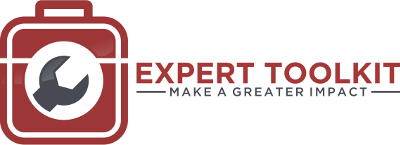Creating a Business Model Canvas
The business model canvas is a visual tool used to help entrepreneurs and business leaders develop and communicate their business model. It is a simple, yet powerful tool that can be used to design, test, and implement new business models or to improve existing ones. In this article, we will explore what the business model canvas is, its history, how it is used in business, and the skills and roles needed to use it effectively. We will also provide a detailed step-by-step guide for creating a business model canvas, as well as a case study and best practices for using it. The business model canvas was first introduced by Alexander Osterwalder and Yves Pigneur in their book "Business Model Generation" in 2010. They designed the tool to help entrepreneurs and business leaders develop and communicate their business models in a simple and visual way. Since its introduction, the business model canvas has become a popular tool in the business world, and has been used by companies of all sizes and industries.
Entrepreneurs and business leaders can use the business model canvas to develop and communicate their business model. It can be used to design, test, and implement new business models or to improve existing ones. We can use the tool in a variety of situations, including:
- Developing a new business idea Improving an existing business model
- Communicating a business model to investors or stakeholders
- Identifying additional revenue streams or cost savings opportunities
- Evaluating the feasibility of a business idea
The business model canvas has nine key components:
- Value Proposition: What value will your product or service provide to your customers?
- Customer Segments: Who are your target customers?
- Channels: How will you reach your customers?
- Customer Relationships: What kind of relationship do you want to have with your customers?
- Revenue Streams: How will you make money?
- Key Resources: What resources will you need to deliver your value proposition?
- Key Activities: What activities will you need to do to deliver your value proposition?
- Key Partners: Who will you partner with to deliver your value proposition?
- Cost Structure: What will it cost to deliver your value proposition?
Creating a business model canvas typically takes several hours to a few days, depending on the complexity of the business and the level of detail required. It is important to note that the business model canvas is a living document and should be reviewed and updated regularly. The business model canvas is relatively easy to understand and use, but it requires a certain level of business acumen. A basic understanding of key business concepts, such as value proposition, revenue streams, and cost structure, is necessary to create an effective business model canvas.
The business model canvas delivers several benefits to organizations, including:- Helps entrepreneurs and business leaders develop and communicate their business model
- Provides a visual representation of a business model that is easy to understand and communicate
- Can design, test, and implement new business models or to improve existing ones
- Can help organizations identify additional revenue streams or cost savings opportunities
The business model canvas is not without limitations. It is a simplification of a business model and does not consider all the complexities of running a business. It is a static representation of a business model and does not account for changes. Some common mistakes organizations make when using the business model canvas include:
- Focusing too much on one aspect of the business model, such as the value proposition, and neglecting other important elements
- Not reviewing and updating the business model canvas regularly
- Not involving key stakeholders in the creation of the business model canvas
To use the business model canvas effectively, organizations should:
- Involve key stakeholders in the creation of the business model canvas
- Review and update the business model canvas regularly
- Be open to changing the business model as needed
In the example of a local ice cream shop, the business model canvas can identify key components of the business, such as the target customer segments, revenue streams, and cost structure. By creating a business model canvas, the ice cream shop could identify additional revenue streams, such as catering services and wholesale distribution, which helped to increase sales and profits.
To get started with the business model canvas, readers can:- Read more about the tool and its key concepts
- Use the template and instructions in our Management Consulting Toolkit
- Create a business model canvas for their own business or idea
- Review and iterate on their business model canvas regularly
- Share their business model canvas with key stakeholders and solicit feedback.
In conclusion, the business model canvas is a powerful tool that can help entrepreneurs and business leaders develop and communicate their business model. It is relatively easy to understand and use, but requires a certain level of business acumen. By following the steps outlined in this chapter, organizations can use the business model canvas to improve their business and achieve greater success. It is also important to remember that the business model canvas is a living document and should be reviewed and updated regularly to keep up with the changes in the business environment and the organization itself.
